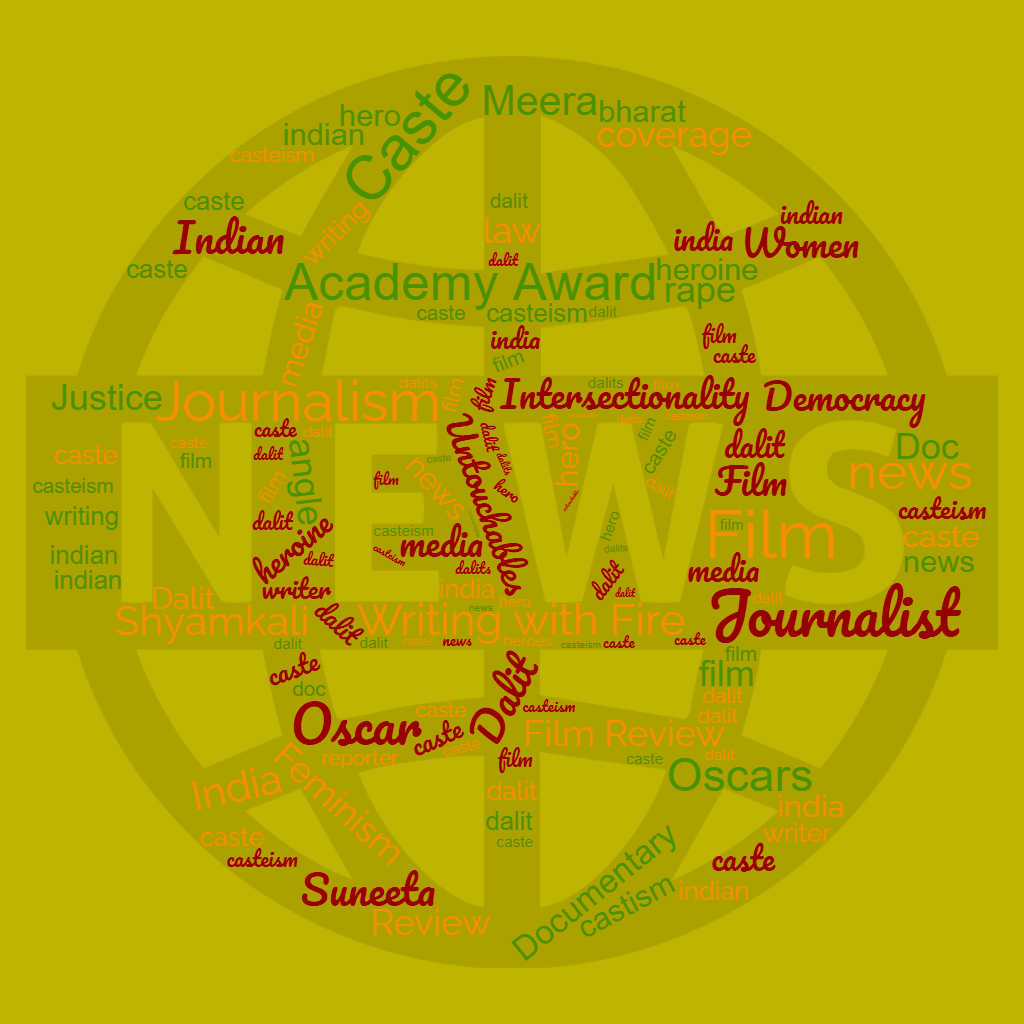
12.03.2022
Often, we retreat from the very great but empty noise that the Oscars make. However, on this occasion I decided to watch one of the films that was up for the nominations, ‘Writing with Fire’. Famously, if one is from an Indian ethnic background, the documentary is the first Academy Awards nomination which has been directed by an Indian director (Rintu Thomas and Sushmit Ghosh). It is also one of the only films, Indian or otherwise, which has ‘untouchable’ women as heroines. Luckily for me, the film is on BBC IPlayer and is available to stream online as part of their ‘Storyville’ series.
‘Writing with Fire’ is about the perils and adventures of three lower caste (‘Dalit’ which translates as ‘oppressed’) women journalists, Meera, Suneeta and Shyamkali. They work for the only entirely woman run newspaper in India, Khabar Lahariya or ‘Waves of News’. In the opening credits, the film makers write that when these Dalit women set up a newspaper in 2002, they ‘started a revolution’. The film follows the newspaper story from 2016 when the publication went digital. The attempt is to show a sea-change. Meera says, “In our region, a journalist meant you are an upper-caste man. A Dalit woman journalist was unthinkable. Over the last 14 years we’ve changed this perception.” Meera asks us to consider what it would be like if Dalit women had power and what they would do with it.
What follows in the film is a traditional and thoroughly conventional hero narrative which has been built up over thousands of years. The difference is that the hero is not a hero, but a heroine, and from the lower castes. What is the traditional hero narrative? The hero comes from humble origins, like the Greek demigods raised secretly by peasants as children. However, such humble origins disguise the greatness, nobility and royalty of the hero, which are revealed later. The hero faces adversity and mortal danger, as in a glorious battle. It is stated in the credits that India is one of the most precarious places in the world to be a journalist, with many murdered. The film shows the response to one murder of a female journalist by the workers of Khabar Lahariya. The hateful trolling of the women journalists is illustrated as well as their vulnerability to the Indian mafia. The hero is threatened by a return to quotidian life, like Hercules compelled to clean the stables. Thus, the women’s husbands attempt to stop them writing for the newspaper to work in the home instead as housewives. Finally, the hero must triumph. Khabar Lahariya is presented as an out and out success, measured by the amount of YouTube views it attracts, which number in the tens of millions.
This hero narrative unfolds amidst a glorification and justification of journalism, the pursuit that the women have dedicated their lives to. Towards the end of the documentary, Meera recites that the journalists are fighting to transform society. That they are holding the powerful to account. That they have made their journalism the voice of democracy. That they didn’t let the fourth pillar fall. And that they continue to hold a mirror to society. Thus, the film seems to be about everything that lip service holds dear: truth, balance, democracy.
Not only this, but the journalists are presented as law-givers. The screen first jumps into motion with Meera asking a woman in person about being raped multiple times in her home by four men. The opening credits mention how many Dalit women are subjected to violence across India and the film shows how Meera and others are trying to challenge the justice system which doesn’t respond to these atrocities. The unnamed rape victim says that the police refuse to lodge her complaint and intimidate her when she attempts to do so. The woman is going to newspaper because they are the only ones that listen to her story. As the husband of the victim says, “We don’t trust anyone else. Khabar Lahariya is our last hope”. Meera confronts the police about the multiple rapes and she proclaims that she is “fighting for justice in a democracy”.
My impression of the film as a whole was that it was a story told well. Certainly, Dalit women deserve to be seen as heroes too. The focus on the stories of the three women journalists gave that personal touch which made the abstract ideals the film supports into something concrete and something that the viewer could really relate to. The cinematography by Sushmit Ghosh and Karan Thapliyal was very beautiful. However, I am more pessimistic about the role of journalism in society. The documentary aims to present the journalist as objective, neutral, impartial, a server of truth, justice and democracy. These are claims that are a stretch of the imagination much too far for me. Again, I am troubled by why the Western media has nominated the film for an Academy Award. Khabar Lahariya is the voice of the poor, oppressed women in India. Naturally, they are pessimistic about power and the government in India. That is, they criticise the society they find themselves in because they hope to transform it and make a better position for themselves. This is fine. This is acceptable. Indeed, I support these women in their mission. However, what is unacceptable, is that the Western media and its public discourse always criticise India when they know nothing about it, in a supreme act of Orientalism and racism. The Academy seems to have selected a film which presents India as a colossal sewer because this is what they think about the country. This is not fine. This is what is unacceptable. And in this, they are trying to use that objectivity associated with journalism to try and present their racist notion of a whole country as the unqualified truth. Final verdict? A good, revolutionary film spoiled by an Oscar nomination and Western practices of racism.
